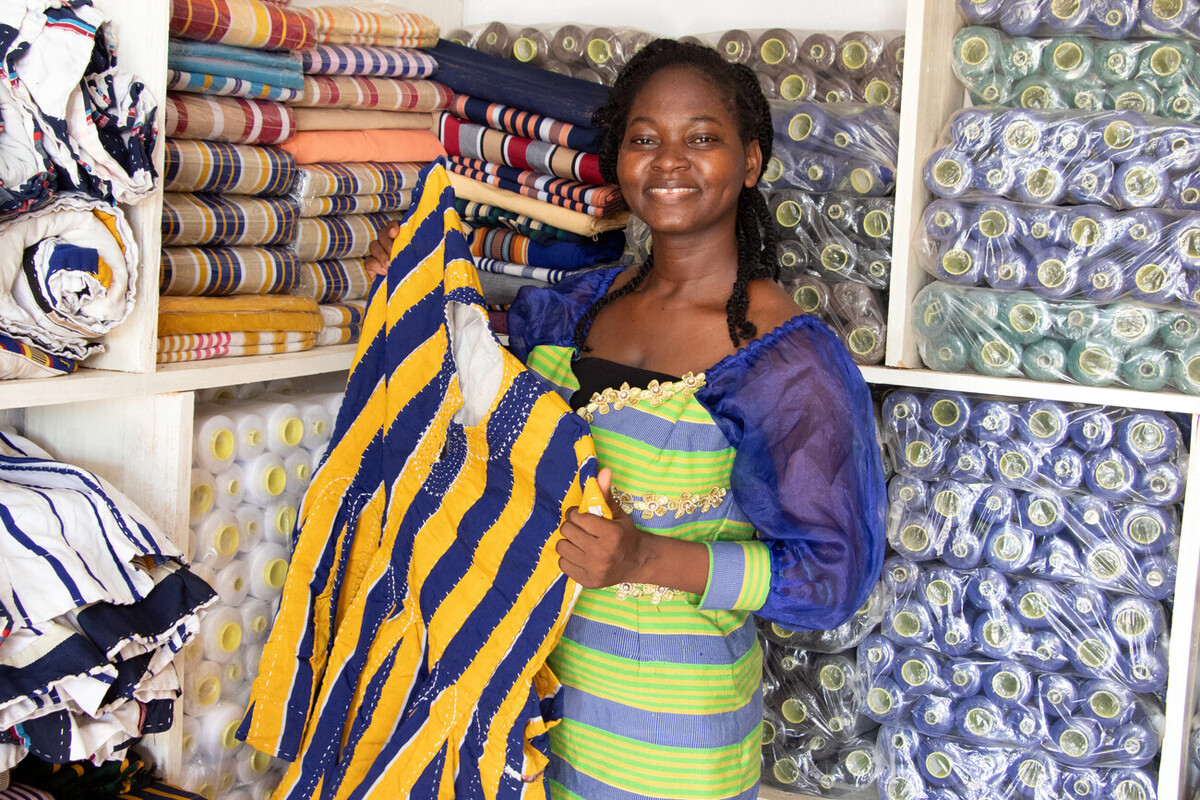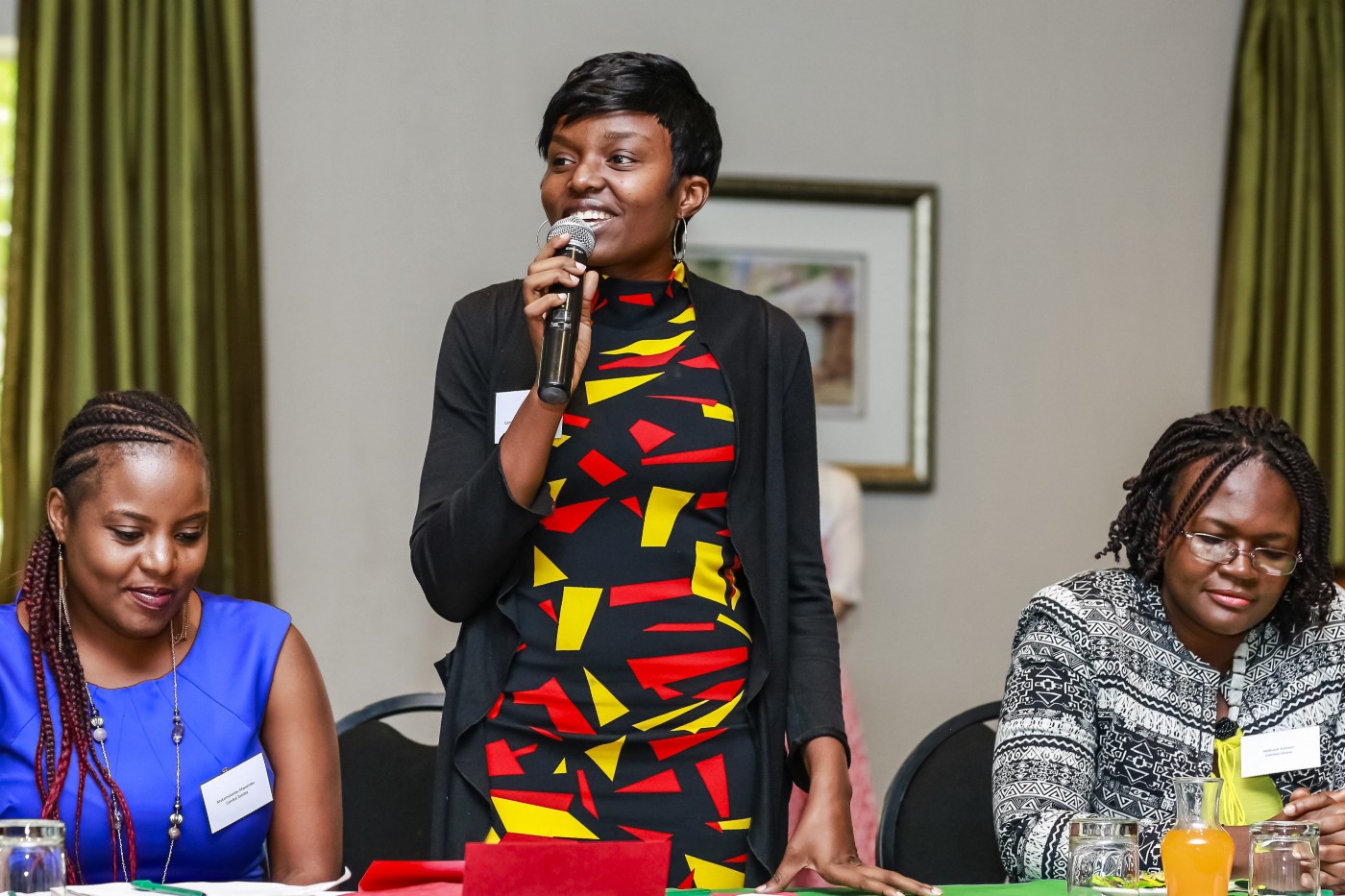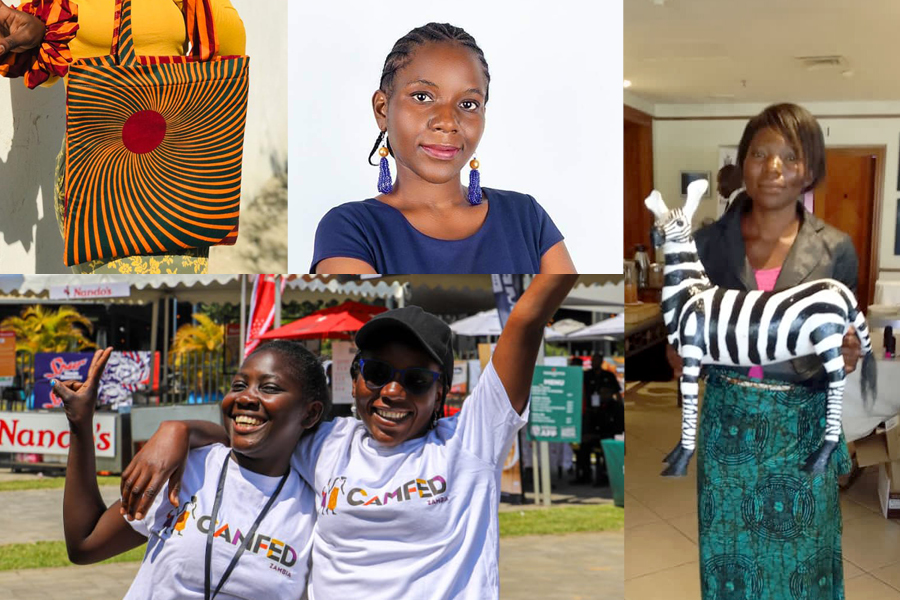Madame Victoria, a teacher I support to look after the needs of some of the most marginalized girls in rural Zambia, always says: “How can we find a solution to a problem we haven’t personally encountered?” She knows that youths who have lived poverty have a nuanced understanding of the problems that marginalized communities face.
We are role models with a vision of a better future. That future starts with education.
I had to drop out of school because of poverty. But thanks to the support I received to return and complete my education, I now work to give more girls that chance. In my experience, there are five strategies we need to deploy to deliver on the promise of quality secondary education for all by 2030:
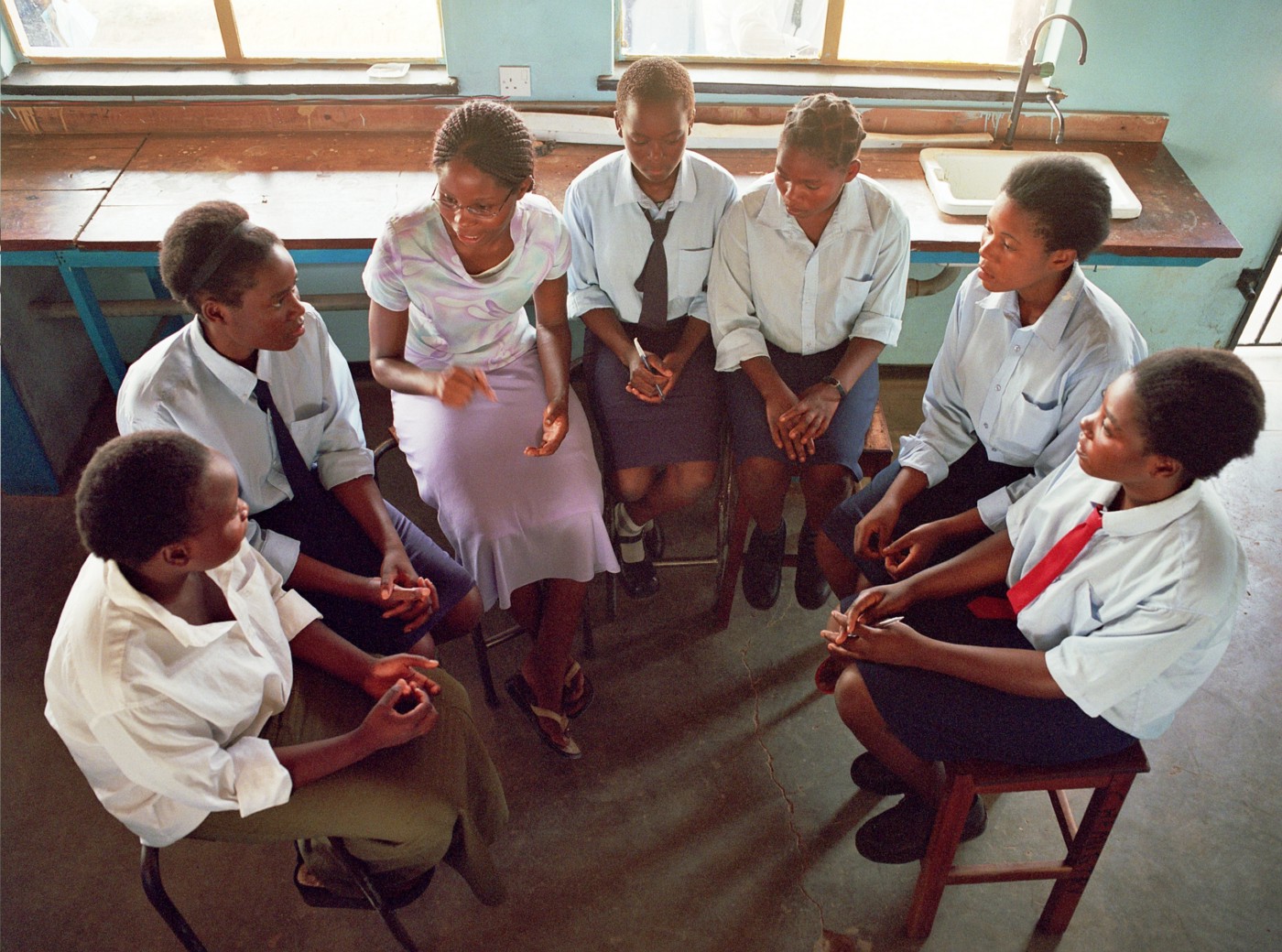
Young women in the CAMA network partner with teachers to deliver psycho-social support to vulnerable students
1. Invest in youth networks
No youth can change the world in isolation. Those at the margins often lose hope. They cannot see a better future. We need networks of support and empathy. I belong to CAMA, a group of over 55,000 young educated women in rural sub-Saharan Africa. We were once among the most disadvantaged.
We had financial and emotional support at school, then we came together to support each other, and now we support more vulnerable children. Through CAMA we access health and business training, small grants, micro-loans, and opportunities for further education. We are organised into elected committees. Every day we think of new ways to support the development of our communities. We are advocates for education and gender equity in our communities. We share the data that shows how investment in girls’ education delivers great returns.
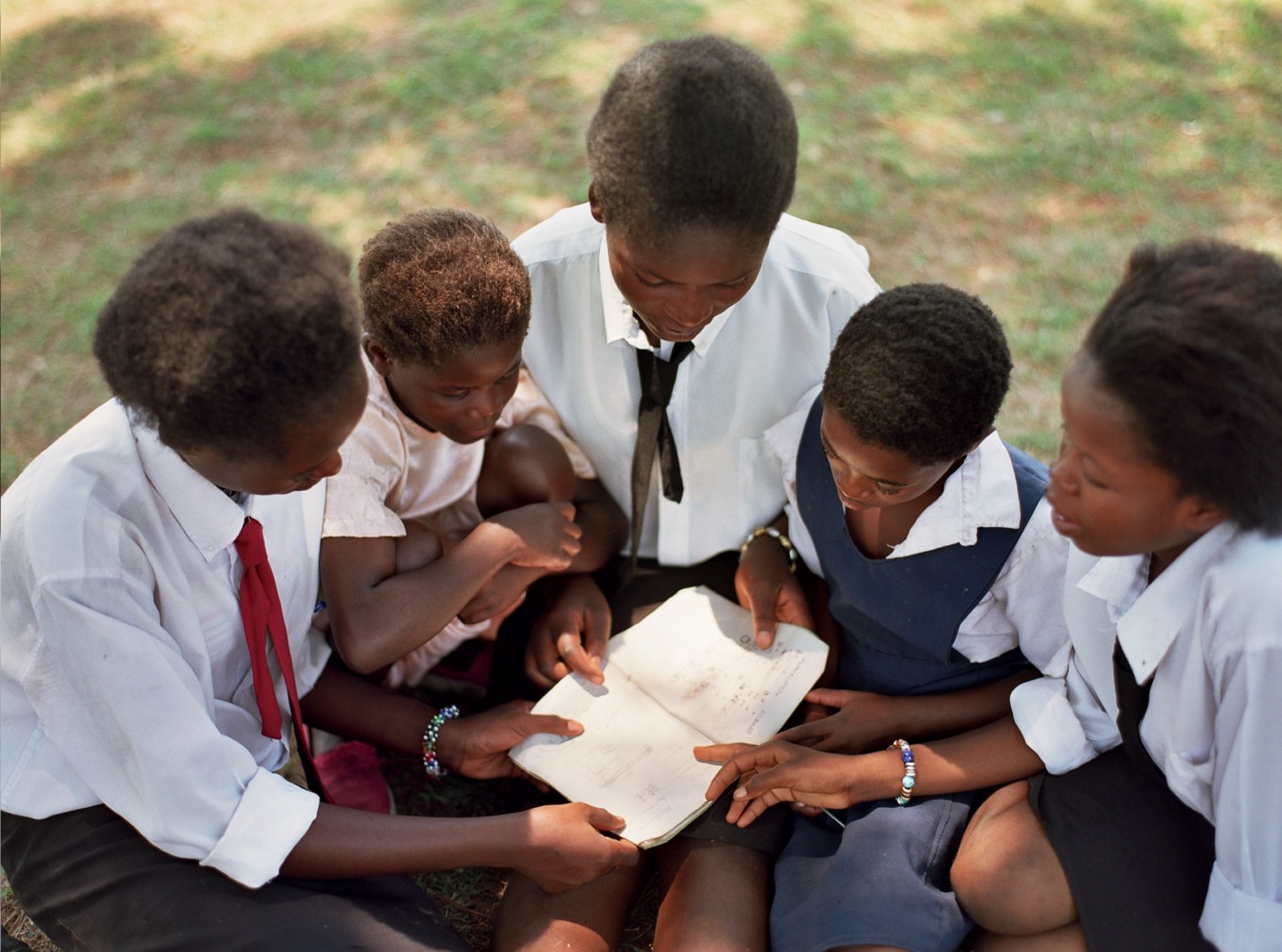
2. Learn from disadvantaged families
Listen and learn from families, and support leaders within communities. The barriers to education are complex. When a mother “marries off” her daughter rather than sending her to school, do not blame her. Understand the context. She is on her own with 10 children. There is no money for food, so how can she afford school uniforms or books? She may be ill and worried about her daughter’s future. HIV is a big danger. She thinks the safest place is with a man who can provide a house and regular meals. She sees no other option. With community support and some small financial resources, we can change her context. Educated young women can be respected role models, and offer practical solutions. I recently spoke to Mrs Banda, a single mother of seven and a subsistence farmer in my community. None of her children were in school. I helped her to grow maize to sell, so she could save for school. I bought the uniforms and books for her two youngest. Now they are doing very well.
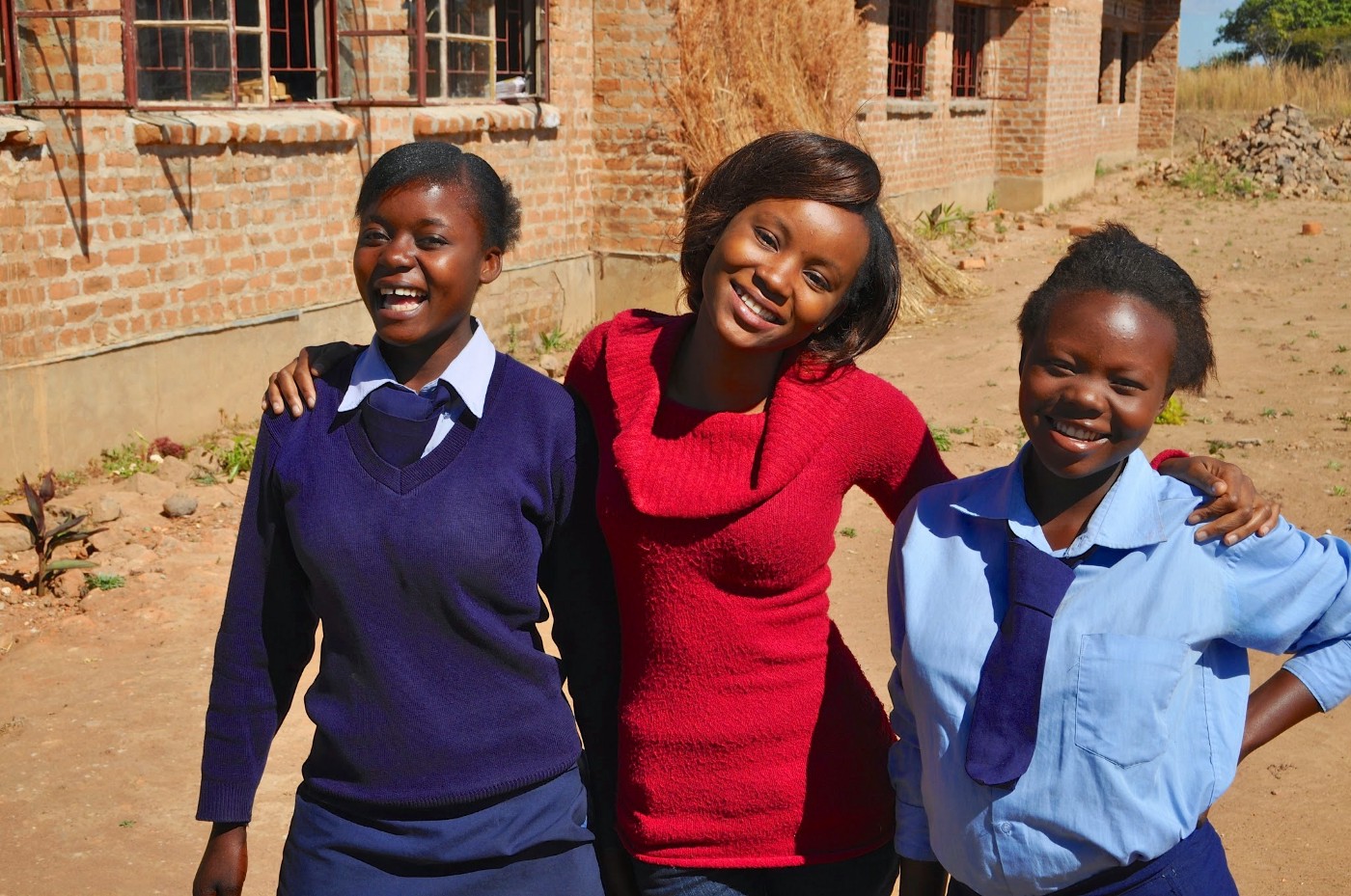
My CAMA sister Phydes was supported through school by Camfed. Now she is a qualified teacher and mentor to more girls.
3. Work with those in authority
63 million adolescents are out of school worldwide. To reach them by 2030 we need to work within school systems and with local authorities where possible. Together we need to tackle gender-based violence, ensure child protection, provide universal access to sexual reproductive health information, and promote youth decision-making through outreach activities. Show respect, action and results, and officials will listen. Your success is their success. I work with district officials who once supported me. They see the result of investing in me. We start initiatives in communities, teaching health and financial literacy, and introducing IT as a way to empower youths. We work with traditional leaders. In Africa, youth must respect their elders. But now the traditional leaders are happy to have their opinions influenced by youth like me, because they see the positive change in the community. They set aside land for parents to grow maize for school meals. When they see children, once too hungry to learn, stay in school and succeed it makes them proud.
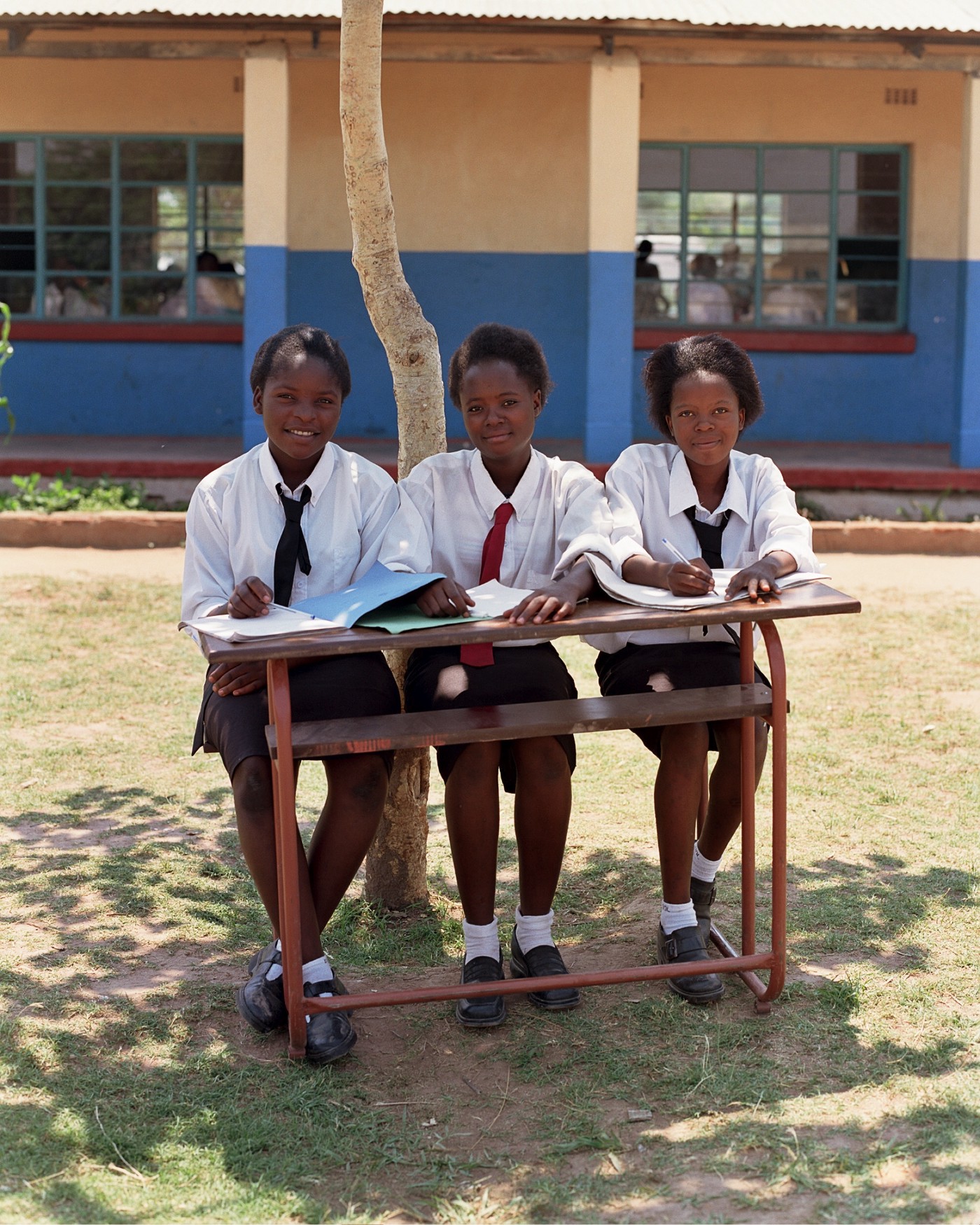
4. Rally everyone to improve the school environment for girls
Youth who are the first in their family to complete school understand the psychology of poverty. Many girls are shy, scared, and do not feel entitled to learn. Many have no time to study because of chores and responsibilities at home. We must invest in safe schools, in quality teachers, in basic sanitation. But also in early childhood outreach, and the psycho-social support that keeps girls in school, returns them to school, and helps them succeed.
If girls never enter school, or are pushed out because they fail their exams, early marriage is the only option. Mentorship programs led by young women are sustainable and affordable and build new skills for women and girls. In CAMA we mentor and council youths in schools and in their communities. We create school clubs, student councils, and help desk clubs, protecting child rights. The president of the club is a girl, so boys gain new respect for girls. We connect directly with vulnerable girls in schools, and follow up when girls drop out. They feel safe to confide in us. Maybe they live in child-headed households, suffering from grief or hunger. Or they care for a sick relative and can’t find time to study. Maybe there is abuse at home or at school. We link them to help. Often we look after orphans or pay their school costs. The girls I mentor know that their story once was my story. Now they can imagine a different future for themselves.
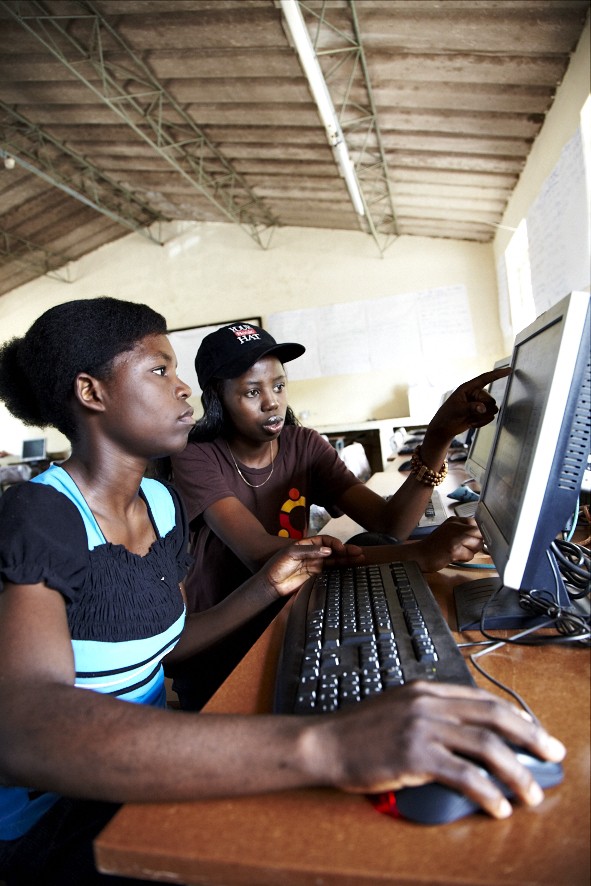
ICT lessons at a CAMA resource centre in rural Zambia.
5. Invest in young people after school
In sub-Saharan Africa, the youth population is increasing faster than anywhere else. This challenge for the education system is also a big opportunity if we use the expertise of young women to help the most marginalized succeed.
Many youths cannot imagine how to make a living after school, and the expectations of their families are big. This makes young women vulnerable to exploitation.
Thousands of my CAMA sisters are now training as Learner Guides to bring life skills and wellbeing programmes into their local schools. They support students to plan for the future while they gain teaching and business skills.
With the right funding, we will introduce this program in Zambia soon. Right now I mentor young people on how they can start businesses, and on the importance of budgeting, saving and banking. 15-year-old Kitana* almost dropped out because she thought she wouldn’t get a job after school. But she’s good at math and sciences. I helped her plan to realise her dream of becoming a nurse. Now she’s studying hard and wants to sew school uniforms to earn money for nursing college.
Youth leadership is all about empathy and action, and showing by example what is possible. Every mother — given the choice — wants the best for her child, and youth leaders are ready to help. We just need an active voice in national and international policy. 2030 is just around the corner. We have no time to lose.
*not her real name
This blog was published as the concluding blog for UNGEI’s #YouthLeads blog series running from August 8 -12, 2016.
Find out more about the youth leaders in the CAMA network.
